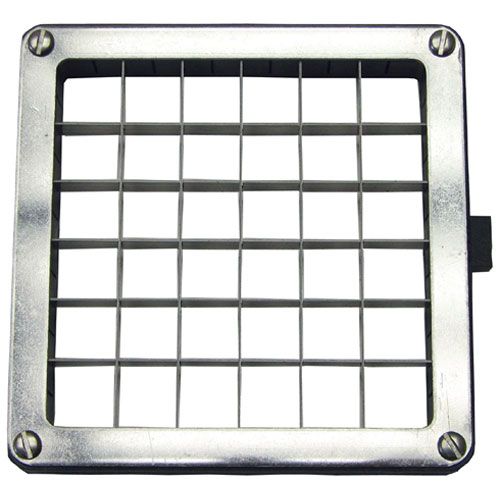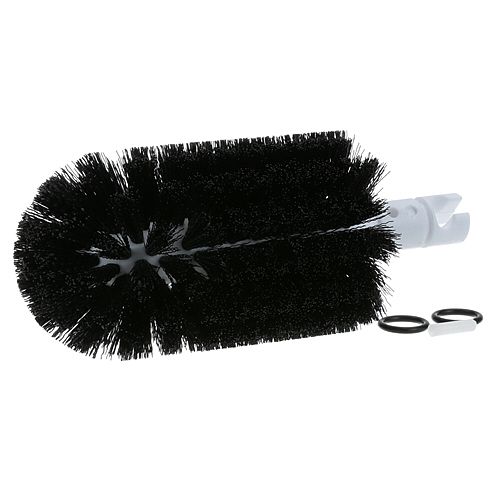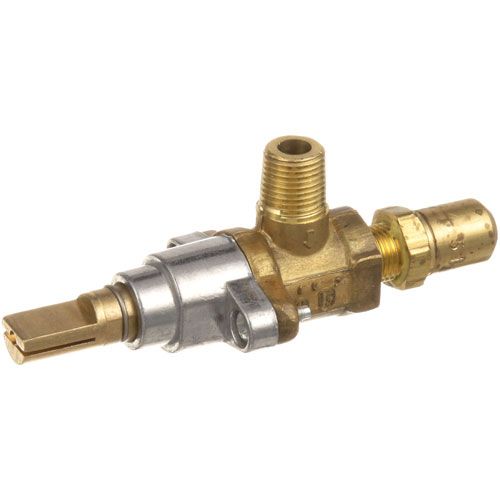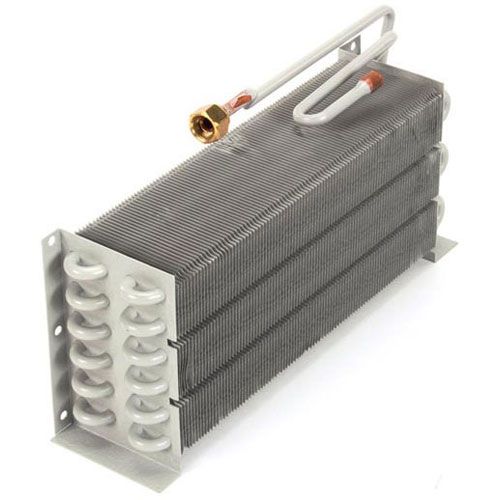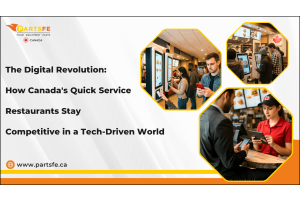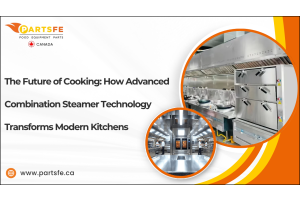Which type of Items Needed to Start a Restaurant?
Launching a new restaurant is exciting, but it also requires careful planning, especially when selecting the right kitchen tools. Whether you’re sourcing from trusted vendors or exploring, choosing reliable gear is crucial for smooth operations. The right tools guarantee efficiency, consistency, and safety from day one, helping your kitchen run seamlessly even during peak hours.
In addition to location-based suppliers, many restaurant owners turn to established distributors. Partnering with experienced suppliers ensures your kitchen is equipped for efficiency, compliance, and long-term success.
Understanding Your Complete Restaurant Startup Checklist
When planning a new restaurant, truly understanding your complete startup checklist goes beyond listing standard kitchen equipment. It’s about anticipating challenges, creating efficiency, and preparing for both everyday service and unexpected demands. Many new owners focus only on basics—but a thoughtful checklist includes often-overlooked items that make a huge difference in operations.
Here’s what to focus on:
-
Menu-Specific Equipment: Match appliances to your menu needs. For example, specialty ovens, salamanders, or sous vide machines can elevate food quality and versatility.
-
Inventory & Storage Planning: Include prep refrigerators, dry storage solutions, and shelving systems that maximize space and reduce waste.
-
Prep Workflow: Ergonomic tools, portioning devices, and digital scales streamline prep tasks and improve accuracy.
-
Service Readiness: Maintain backups of dishes, utensils, and serving pieces to ensure uninterrupted service during peak hours.
-
Sanitation & Compliance: Handwashing stations, grease traps, and antimicrobial surfaces help meet local health codes.
-
Technology & Small Appliances: Smart timers, energy-efficient blenders, and induction cooktops save time and reduce utility costs.
A well-understood startup checklist ensures your kitchen can handle both day-to-day operations and unexpected challenges, giving your restaurant a strong foundation for long-term success.
Must-Have Tools for Every New Commercial Kitchen
Opening a restaurant in the U.S. requires more than standard appliances. Owners must consider the equipment needed for restaurant startup to ensure efficient workflow. This also helps meet local regulations and handle operational challenges.
Kitchen Equipment
A modern commercial kitchen depends on high-performance cooking systems that boost speed, consistency, and workflow efficiency, helping staff handle peak hours with ease. Some of them include:
-
Multi-Function Combi Ovens: Bake, roast, and steam simultaneously for menu flexibility.
-
Induction Cooktops & Portable Burners: Fast, energy-efficient, and reduce kitchen heat load.
-
Salamanders / Broilers: Perfect for high-volume finishing or open-flame presentation.
-
Range / Stove + Oven: Commercial-grade core appliances for everyday cooking.
-
Ventilation & Fire Suppression Systems: Hood systems with fire suppression for safety and compliance.
-
Kitchen Display System (KDS): Digital screens to streamline orders and reduce ticket errors.
Food Prep Equipment
A well-structured prep area speeds up production and ensures menu consistency. These tools support accuracy, safety, and proper food handling throughout busy service hours:
-
Prep Tables & Cutting Boards: Color-coded boards prevent cross-contamination.
-
Vacuum Sealers & Sous-Vide Machines: To ensure consistency, portion control, and precise cooking.
-
High-Capacity Blenders & Mixers: For sauces, batters, and large-volume prep.
-
Ergonomic Knives & Chef Tools: To reduce strain and improve efficiency.
-
Digital Thermometers & Portion Scales: To maintain accurate portions and food safety compliance.
-
Prep Fridges with Temperature Logging: To track temperatures to meet USDA and local health codes.
-
Mobile Cold Storage Carts: For flexible storage for prep, catering, or pop-ups.
-
Ingredient Rotation Labels: To reduce waste and streamline inventory management.
-
Inventory & Ordering Software: To track ingredients, send alerts for low stock, and support menu planning.
Apparel & Uniforms
Proper uniforms help staff reinforce professionalism and operational consistency. Restaurant staff need protective, durable, and comfortable apparel to maintain hygiene and safety, listed below:
-
Chef coats/jackets, pants, aprons
-
Non-slip shoes
-
Hair nets, chef hats
-
Cut-resistant and heat-resistant gloves
-
Uniform tracking software monitors staff uniform inventory and replacement schedules.
Tableware
Quality tableware enhances presentation and supports smooth service flow. Restaurants must stock durable, versatile pieces suited for both daily use and peak dining times, such as the following:
-
Plates, bowls, and serving dishes
-
Utensils (forks, knives, spoons)
-
Glassware (water glasses, wine glasses, specialty)
-
Condiment holders, napkin dispensers, ramekins
-
Versatile servingware for dine-in and catering setups
-
Smart inventory tracking, like barcode or RFID-enabled tableware tracking for large operations.
Food Packaging Supplies
Restaurants need durable and eco-friendly packaging to support takeout and delivery while maintaining food quality and meeting sustainability standards. Owners can maintain the stack of:
-
Eco-friendly to-go containers (recyclable, compostable, or BPA-free)
-
Disposable cutlery, napkins, lids, and straws
-
Insulated delivery bags and temperature-control accessories
-
Labeling materials for food rotation and allergen control
-
Delivery management tools integrate with POS and third-party apps for efficient order tracking.
Janitorial Supplies
A clean kitchen protects food quality and keeps your restaurant compliant with health regulations. These essential tools simplify sanitation routines and reduce contamination risks:
-
Cleaning rags and microfiber cloths
-
Mops, buckets, scrubbers
-
Sanitizing chemicals (NSF-approved)
-
Trash cans, recycling bins, wet-floor signage
-
Grease trap maintenance tools
-
Cleaning schedule software like tracks janitorial tasks and compliance logs digitally.
Safety Equipment
Safety tools are essential for preventing accidents and responding quickly to emergencies. Every commercial kitchen must maintain the following to protect staff and meet code requirements:
-
Fire extinguishers (including Class K for grease)
-
Hands-free handwashing stations
-
First-aid kit, eye wash station, emergency signage
-
Safety signage (wash hands, emergency exits)
-
Temperature monitoring devices (thermometers, log systems)
-
Emergency alert systems, like automated notifications for fire, gas leaks, or equipment failure
By focusing on these often-overlooked restaurant essentials, the restaurant owners can build kitchens that are efficient and safe. These tools prepare them for both daily service and unexpected challenges.
How to Choose the Right Equipment for a Startup Restaurant
Choosing the right restaurant equipment is critical for a startup’s efficiency, safety, and long-term success. It ensures your kitchen meets your menu, space, and operational needs from day one.
Small Restaurants / Cafés
Small restaurant setups require compact, multi-purpose equipment that maximizes limited space. These tools help maintain efficiency while keeping costs and energy consumption low.
-
Compact Refrigeration: Reach-in fridges or under-counter units that fit tight spaces.
-
Prep Space: Small prep tables (24–36 inches) with storage underneath.
-
Cookware & Serving Sizes: Multi-purpose pans and plates (8–10 inch standard) to reduce inventory.
-
Countertop Appliances: Blenders, mixers, and induction cooktops instead of large ovens.
-
Energy Efficiency: Smaller appliances save on electricity and gas in limited operations.
Medium Restaurants / Casual Dining
Mid-sized restaurants need balanced equipment that supports moderate volume without overcrowding the kitchen. These setups allow flexibility for menu changes and multiple cooks.
-
Mid-Sized Refrigeration: Combination of reach-in fridges and walk-in coolers for peak volume.
-
Cooking Equipment: Standard ranges, convection ovens, fryers, and griddles sized for moderate throughput.
-
Serving & Portion Sizes: Plates 10–12 inches; versatile serving dishes for menu rotation.
-
Specialty Equipment: Salamander broilers, soup kettles, or small combi ovens for menu variety.
-
Ergonomics: Workstations spaced for 2–3 cooks working simultaneously.
Large Restaurants / Full-Service or High Volume
Large restaurants demand heavy-duty, high-capacity equipment designed for continuous production. These kitchens must support high staff numbers and large batch cooking with minimal downtime.
-
Industrial Walk-In Coolers / Freezers: High-capacity units to store bulk ingredients.
-
High-Capacity Cooking Equipment: Multiple ranges, large convection ovens, tilt skillets, and industrial fryers.
-
Serving & Dishware: Plates 12–14 inches; multiple backup sets for fast service.
-
Automation & Smart Equipment: Conveyor ovens, automatic mixers, or kitchen display systems.
-
Space Planning: Clearly defined prep, cooking, and plating zones for 5+ staff working simultaneously.
-
Special Considerations: Energy load, grease trap capacity, ventilation, and fire suppression systems must handle heavy usage.
Budgeting Smartly for Restaurant Equipment Purchases
Smart budgeting ensures you invest in the right equipment to meet your restaurant's needs, improving efficiency, safety, and long-term savings.
-
Analyze Kitchen Requirements: Determine menu complexity, daily customer volume, and kitchen layout. Identify essential vs. optional equipment for your restaurant's size.
-
Set Budget Allocations by Restaurant Size:
-
Small restaurants/cafés: $15,000–$30,000 for core equipment.
-
Medium-sized restaurants: $50,000–$100,000 for expanded kitchen, refrigeration, and prep tools.
-
Large restaurants / high-volume operations: $150,000+ for commercial-grade cooking units, walk-ins, and advanced technology.
-
Plan for Hidden Expenses: Include installation, delivery, training, and a 10–15% contingency for repairs or replacements.
-
New vs. Used Equipment: New appliances offer warranties and energy efficiency; used can save 20–40% if verified for performance and safety.
-
Durability & Efficiency: Invest in stainless steel, energy-efficient, and modular equipment to reduce long-term costs.
-
Maintenance Strategy: Schedule regular servicing, cleaning, and calibration to maximize lifespan and minimize downtime.
Common Mistakes to Avoid When Setting Up a New Kitchen
Setting up a kitchen involves careful planning, and overlooking key details can lead to costly issues.
-
Overbuying or Underbuying Equipment: Plan quantities and future growth.
-
Ignoring Workflow Efficiency: Arrange prep, cooking, and plating logically.
-
Neglecting Ventilation & Safety: Ensure proper hood placement and fire suppression.
-
Mismatched Equipment to Menu: Choose appliances suited to your cuisine.
-
Skipping Staff Training: Prevent delays and accidents with proper guidance.
-
Overlooking Energy Efficiency: Reduce utility costs by selecting energy-efficient appliances.
-
Neglecting Maintenance: Schedule routine checks to avoid breakdowns.
-
Poor Storage & Accessibility: Organize dry, cold, and prep storage.
-
Underestimating Peak Demand: Plan for high-volume periods.
-
Neglecting Tech Integration: Align POS, inventory, and kitchen systems.
Focusing on these areas ensures a safe, efficient, and scalable kitchen.
Find out why first-party delivery is important to restaurants and how it can boost customer satisfaction, increase profits, and strengthen brand control.
How to Ensure Your Equipment Meets Compliance & Safety Standards
Ensuring your kitchen equipment complies with safety regulations is essential for protecting staff, customers, and your business.
-
Choose Certified Equipment: Select appliances certified by recognized authorities like NSF, UL, or CE.
-
Regular Inspections: Check for wear, electrical faults, or gas leaks routinely.
-
Scheduled Maintenance: Perform preventive maintenance to avoid breakdowns and hazards.
-
Proper Installation: Ensure equipment is installed according to manufacturer guidelines to prevent accidents.
-
Temperature & Calibration Checks: Regularly calibrate ovens, refrigerators, and thermometers to maintain food safety standards.
-
Material Safety: Use equipment made of non-toxic, food-grade materials that are easy to clean.
-
Waste & Spill Management: Ensure proper drainage and waste disposal to prevent slips and contamination.
These measures help maintain a safe, efficient, and legally compliant kitchen environment.
Explore 13 most common restaurant challenges: expert tips & solutions to overcome staffing, inventory, and operational hurdles effectively.
Final Restaurant Startup Checklist Before Opening Day
Preparing for your restaurant’s opening goes beyond standard tasks; attention to restaurant things ensures a smooth launch. Use this checklist to double-check often-overlooked areas before day one.
-
Sensory Testing: Check lighting, acoustics, and aroma flow for a pleasant dining experience.
-
Staff Comfort & Morale: Prepare break rooms, lockers, rest areas, and opening-week incentives.
-
Supplier Contingency Plan: Identify local emergency suppliers for produce, meat, and dry goods.
-
Cross-Training Staff: Assign backup roles for servers, hosts, and kitchen staff.
-
Wastewater & Grease Trap Inspection: Test grease traps under full kitchen load.
-
Digital Footprint Check: Verify Google Maps, Yelp, and delivery platforms show correct info.
-
Seasonal Prep: Plan for weather impacts on outdoor seating, heating/cooling, and deliveries.
-
Allergen & Dietary Prep: Confirm allergen charts and dietary menu options are accurate.
-
Trial Emergency Drills: Simulate power outage, equipment failure, or kitchen accident.
-
Customer Journey Walkthrough: Test service flow from arrival to restroom and parking.
-
Hidden Storage & Accessibility: Ensure emergency exits, storage rooms, and staff-only areas are accessible.
-
Opening Day Tech Rehearsal: Test POS, online orders, payment terminals, printers, and Wi-Fi under full load.
-
Decor & Ambiance Final Check: Confirm artwork, furniture placement, and decor align with branding and safety standards.
Looking for replacement parts for your restaurant equipment? At PartsFe, we offer top-quality parts from leading brands like Vulcan, True Manufacturing, and Frymaster. Parts for all equipments are available from ranges and ovens to fryers and ice machines to keep your kitchen running smoothly from day one.
References:
https://www.michigan.gov/mdard/-/media/Project/Websites/mdard/documents/food-dairy/food-establishments/New-Food-Establishment-Checklist.pdf?hash=F7F8CB99EEC4BA6FCF3B38DD48685193&rev=34d4c3302551498d914aa2df304c0229
https://www.score.org/resource/checklist/checklist-licenses-and-permits-a-restaurant?
FAQs
How do I hire the right staff before opening, and how should I price my menu during startup?
Look for workers with both skill and strong customer service mindset, and train them early to set clear standards. Use food cost formulas and competitor research to price your menu so it stays both profitable and competitive.
How long does it take for a restaurant to become profitable?
Most restaurants take 6–24 months to reach profitability. The timeline depends on concept, location, and management efficiency.
How much does a restaurant startup cost?
A restaurant typically costs $80,000 to $500,000+ to start, depending on location, size, and concept, with equipment and renovations being the biggest expenses.


